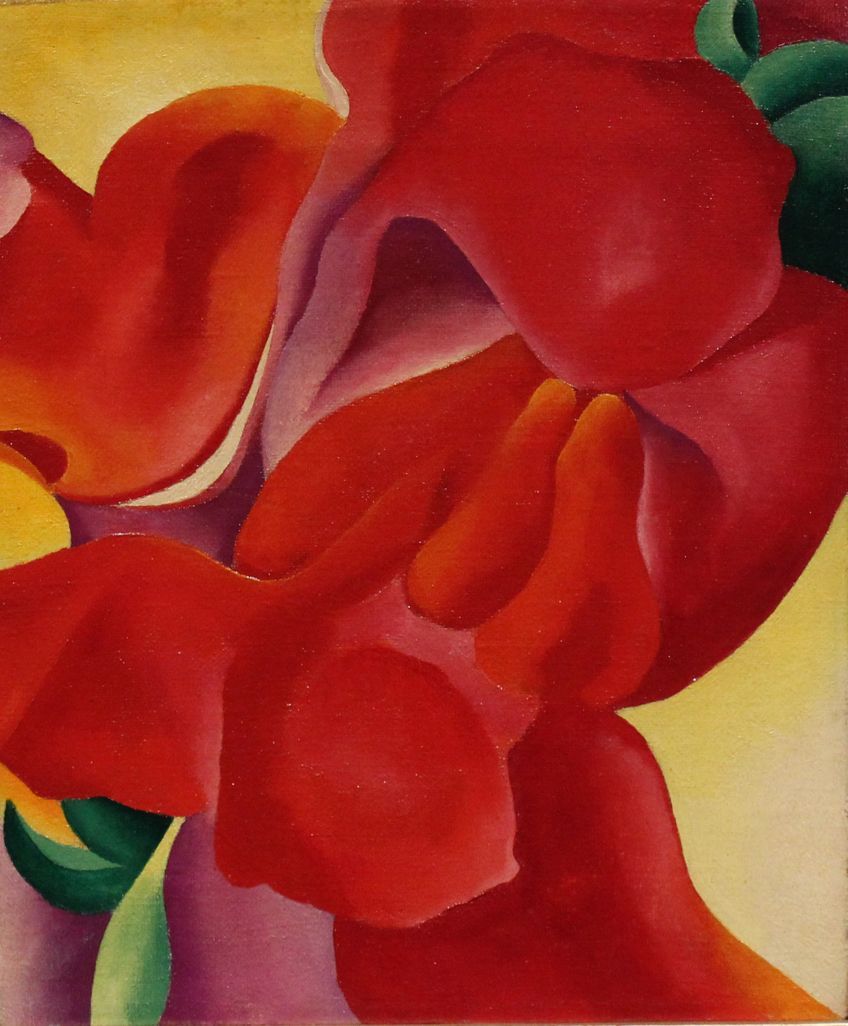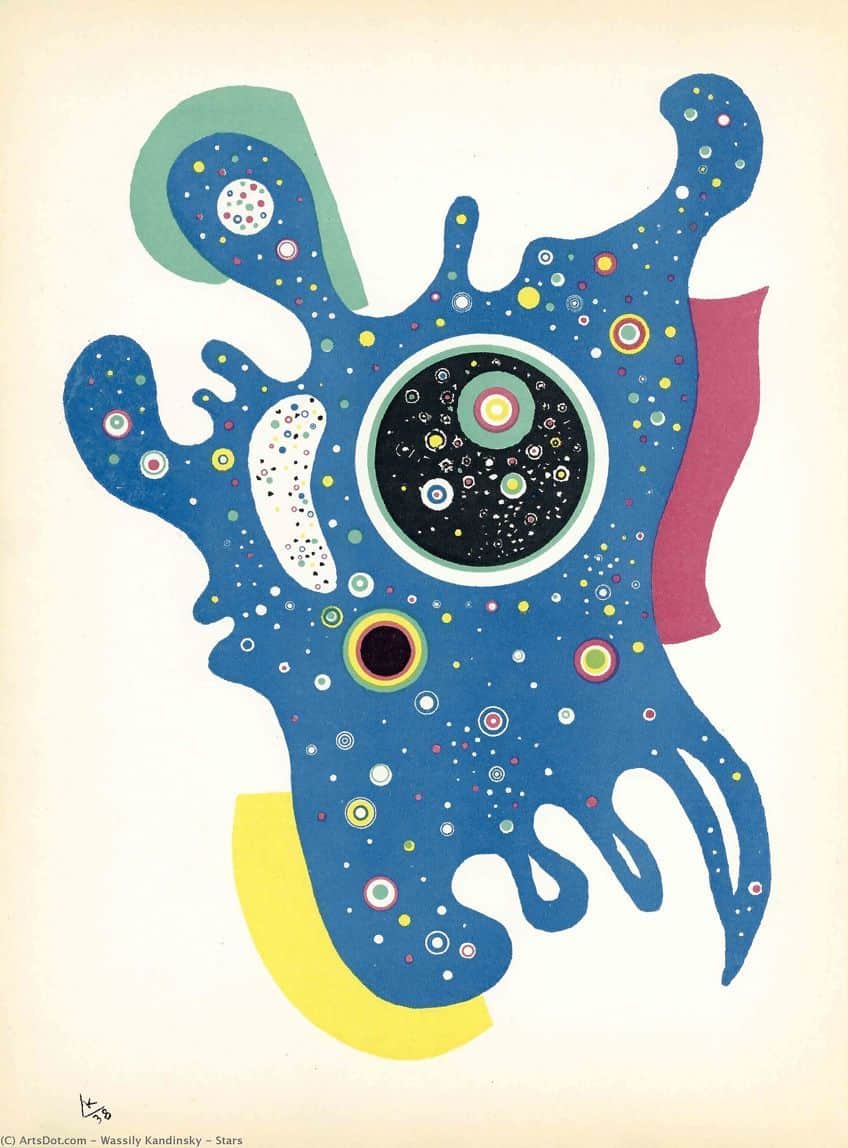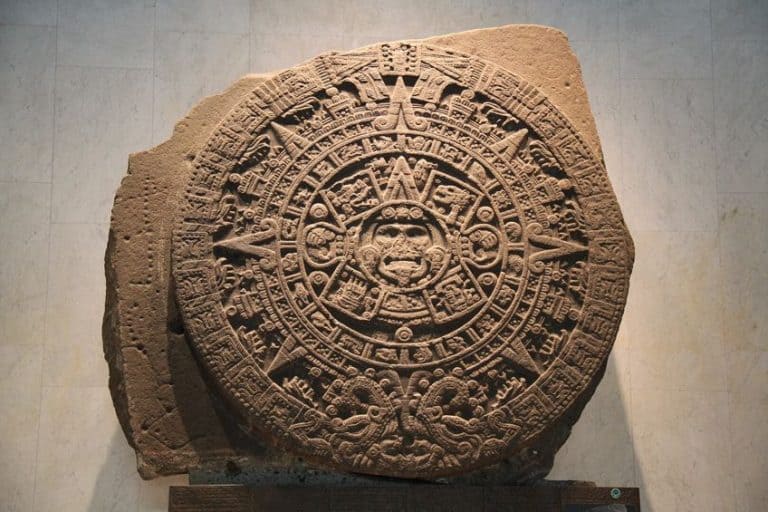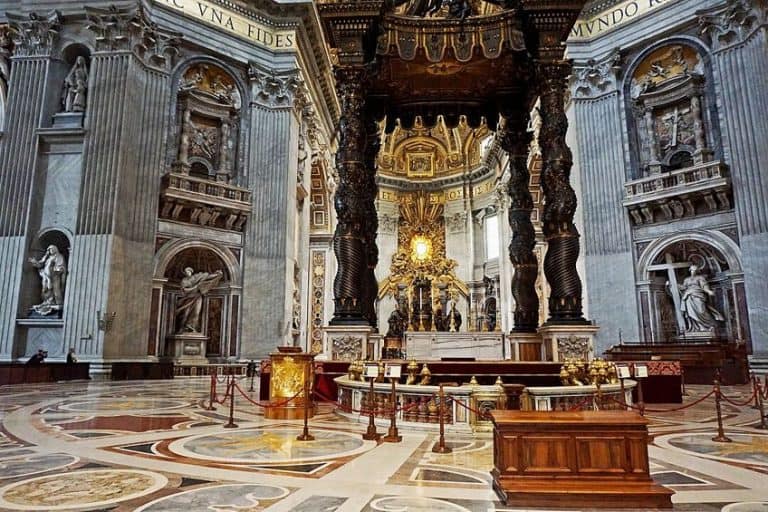Modernism vs. Postmodernism – Comparing Art in the Modern Era
The turn of the 19th century marked the beginning of what is now understood as Modernism, which infiltrated all aspects of culture in Western society. The realization of individuality and the resultant desire to experiment are just two products of Modernism. Its counterpart, known as Postmodernism, emerged in the 20th century as a reaction to the foundations of Modernism, which we will explore further in this in-depth article. Furthermore, we will also discuss the historical context and key characteristics of each movement to help you fully grasp the impact of these two different cultural schools of thought. Read on to learn more about Modernism vs. Postmodernism!
An Introduction to Modernism and Postmodernism
What is Modernism, what is Postmodernism, and what are the differences between Postmodernism and Modernism? If you are keen on learning more about these two major cultural and artistic movements, look no further. Before we dive into the main characteristics of each movement and their differences, let us quickly define each one.

The Differences Between Postmodernism and Modernism
So, what is Modernism? Modernism is a late-19th-century movement that lasted well into the 20th century and was born out of a spirit of rebellion to transform the way the Western world approached and viewed Modern art, culture, politics, life, and society in general. The rise of industrialization was cause enough for many creatives to reject certain principles that were previously rooted in art spaces. These include certain religious beliefs, Enlightenment thinking, and many other foundational philosophies behind the current civilization that drove modernity.
In essence, Modernism was the recognition that the world needed to change its perspective fundamentally.
When did Modernism begin? It is said that Modernism is divided into three distinct eras understood as Early modernity (c. 16th – 18th century), Classical modernity (c. 18th – 20th century), and Late modernity (c. 1900 – 1989). Art forms in the visual arts and architecture fields are said to have showcased some of the earliest forms of Modernism that attempted to reimagine the modern world. Modernism began to reject traditional and religious teachings concerning old social structures since they were then viewed as forms of oppression. Modernism was thus based on reason and idealism.

What are the differences between Modernism and Postmodernism? To better understand these differences, let us dive into the definition of Postmodernism. In essence, Postmodernism opted for a more skeptical approach to reason that questioned the idealist mindset of Modernism. The movement began to criticize what the idea of progress meant and focus on heterogeneity. This meant that the quality and incongruencies of modern society itself were put into question and scrutiny by postmodern artists, which subsequently saw more mid-20th century artists abandon the idea of the object as the primary medium for their art. In theory and philosophy, Postmodernism is understood as an intellectual discourse that questions the dominant narratives of Modernism and rejects the stability of meaning.
Historical Context of Modernism and Postmodernism
Now that you have an idea of what each movement was founded on, we can now dive into the historical context of these movements and their discourses. The context of Modernism was rooted in the late 19th century and is said to have reached its peak in the years following the First World War.
During this time, society was captivated by the adoption of capitalism and industrialization, which sparked many rapid changes across technology and science.
It is important to remember that before this, Victorian ideals and morals surrounding the optimistic outlook in society and fields such as philosophy, psychology, and political theories formed the backbone of society in the late 19th century. It was also during this time that many creatives and intellectuals began to explore alternative modes of expression due to the growing sense of alienation, which was completely incompatible with Victorian society.
In opposition to modernism, Postmodernism emerged in Western philosophy in the late 20th century as a movement that was founded on relativism, widespread skepticism, and subjectivism. The movement questioned reason, that was rooted in ideals of Modernism, and was extremely sensitive to questioning the function and position of ideology in maintaining power economically and politically. In theory, postmodernism was a widespread rejection of intellectual assumptions and foundational tenets of modernity as projected by Western literature, art, and philosophy.

Linguistically, Postmodernism is a term that indicates that it arrived after modernity and thus the movement itself is determined by what modernity was in the 20th century. Postmodernism is historically used as a mass cultural phenomenon that was seen in Western and European societies. Since the Age of Enlightenment in the Renaissance, modernity, in terms of postmodern shifts, can be fully understood as the shift in practices and values defined by European life for over several centuries.
20th-century Postmodernism is thus the crux of critique when it comes to questioning the political, philosophical, and social issues of the modern world. In fields such as the visual arts, science, philosophy, political theory, and sociology, Postmodernism presents critical questions that challenge the underlying foundations of representation, empiricism, Realism, and Humanism.
Exploring the Key Characteristics of Modernism
Modernism has many distinctive characteristics. Among the many characteristics of modernism is the focus on individualism, which prioritizes an individual’s experience and opinion as important to shaping a society as a whole. This means that modernism was focused more on the emotions and subjective realities described by individuals, rather than the historical events or impersonal aspects of society. Alongside this growing need for Individualism was the desire for experimentation, which was also seen in literature among poets, who rejected the conventions of rhyme and rhythm to create what is known as free verse poetry.
Along with experimentation many artists also began to explore the world of absurdity amid the events surrounding the two World Wars and the rapid globalization of humankind.
Movements such as Surrealism were also modernist art movements that promoted understanding of the world in a nonsensical and bizarre way. This in turn gave rise to an increase in the use of symbolism, which also rose quickly in literature in the late 19th century as one of the key characteristics of modernism. In visual art, art that was created following the realism presented by artists such as Gustav Courbet was considered a modern development in art and is thought to have culminated in abstract art in the mid-20th century. Multiple art styles fall under the term modernism, which is rooted in the rejection of traditional values. Such rejection of traditional norms encompasses modernism and is therefore a rejection of history.
Other prominent characteristics of modernism include an increased tendency to experiment with form in terms of elements such as lines, shapes, and color, as well as innovative approaches to abstraction. Many modernist artists also emphasized innovating new processes, materials, and techniques. Furthermore, at the heart of modernism was the artists’ drive to focus on various political and social agendas that were utopian and associated with a belief in modern progress and the ideal depiction of society and human life.

Significant influences on the characteristics of modernism include the Industrial Revolution, which saw the manufacturing of efficient processes and introduced a variety of new technologies. Between 1820 and 1840, the Industrial Revolution saw the innovation of new methods and approaches in chemical manufacturing and iron production, which improved water power and the development of various tools and technologies involving steam power and machines. Significant changes in the reduced use of wood and the transition to biofuels and coal was also a major influence in the factors that contributed to the growing need for modernism. As such, inventions such as Victorian railway stations began to feel more alien to 19th-century society.
Reviewing the Key Characteristics of Postmodernism
Postmodernism consisted of various characteristics that supported alternative narratives born out of the rejection of grand narratives and ideals in Modernism. The anti-authoritarian nature of Postmodernism bridged the gap between high culture and popular culture and thus introduced the possibilities for expanding art style as more free, playful, and accepting of elements from everyday life.
Postmodern art could thus be conceived as ludicrous or tongue-in-cheek, as controversial, self-aware, and confrontational.
By definition, the main characteristic of postmodernism is its rejection of definition itself led by broad cynicism, an aversion toward reason, and the acceptance of consumer culture. Intertextuality through pastiche is another prominent characteristic of postmodern art that relies on the central theme of an artwork to produce an original artwork. As such, pastiche artworks can be composed of multiple sources to present a hodgepodge of ideas and aesthetics.

In literature, intertextuality alludes to the adoption of a parallel text or style as an extension of the work itself while its daughter, pastiche, takes shape as an imitation of an idiosyncratic or unique style. Furthermore, postmodernity is shaped by the intention that there is no historical or scientific truth and that the basics of modernity, thought to be technology and science, do not form the basis of modernity and progress but rather, they act as instruments in mediating power.
Art and Literature: Modernism vs. Postmodernism
To further understand the impact of Modernism and Postmodernism on the arts, one must explore its reach across art and literature. Both movements played a major role in shaping some of the key social constructs, concepts, and philosophies of the 20th century. The primary difference between the different movement’s types of literature is that Modernist writers rejected traditional writing styles and chose to focus on the inner-self-concept and human consciousness in their works.
According to prominent Postmodern authors like Friedrich Nietzsche and Karl Marx, science and technology become ideologies and myths that man seemingly follows blindly.
Many postmodernist authors fused earlier styles of writing in their work to prioritize an unscientific approach to thought processes, thus rejecting logical thought. Modernist authors approached their works with logic and reasoning at the forefront to acquire knowledge while rejecting Realism. In Modernism, visual art was also marked by a rise in Expressionism and Abstract art coupled with notions around absurdism, which was significantly different from previous art styles and trends in art that emphasized Realism and detail.
Literature considered Modernist featured characters who emphasized their growing sense of alienation and disillusionment from society. One of the best pieces of Modernist literature is said to be Ulysses by James Joyce, which offers a retelling of the epic poem by Homer, The Odyssey that describes the return of a Greek hero after the Trojan Wars. Many writers who supported Modernism opted for narratives that offered social critique to stir conversations and change societal perceptions by pointing out how the norms of society were “wrong”.

In postmodernism, one sees a shift toward understanding irrational and unconventional practices that reject traditional Modernist processes and logical thought. Literature considered postmodern was marked by an ideology and reliance on the notion of convention as an unreliable narrator, as a paradox that produced a fragmented state. Postmodern literature would often encompass works that had an authorial self-reference, impossible plot lines, parody, paranoia, unrealistic scenes, and dark humor.
Architecture: Modernism vs. Postmodernism
Modernism and Postmodernism have also grounded themselves in architecture, which we will explore further. The key differences between each movement are largely shaped by their emphasis on perspectives, design elements, and varying objectives. In Modernist architecture, architects adopted the use of modern elements in their plans while postmodern followers prioritized a sense of uniqueness around design.
This uniqueness was characterized by colorful and eclectic styles in architecture, as well as the decorative arts that emerged around the late 20th century.
Modernist architects rejected the former ornamentation in architecture from the 19th century and opted for more modern and sleek designs. On the other hand, Postmodern architecture embraced elements of Modernism, however, it was fused with a playful and whimsical approach that blended classical architecture with unique elements.

As the 20th century progressed, movements such as Minimalism influenced postmodern architecture through its philosophy of refinement of form and simple geometric features. This evolved into a more flared style of design and construction, which were grounded in Modernist concepts, however, differed in philosophy. Among the most notable examples of Postmodern architecture include the Steigenberger Hotel facades created by Michael Graves and the Glass House by Philip Johnson.
In learning more about the key differences between Postmodernism and Modernism, one can trace the development of Modern art and its transition into embracing the unique and whimsical aspects of life that draw from early Modern concepts and philosophies. In doing so, you can be sure to explore alternative ways of approaching your art practice in the contemporary era to discover the hidden gems in art styles that follow Postmodernism.
Frequently Asked Questions
What Is Modernism?
The global movement known as Modernism is considered to be a broad cultural, artistic, and religious movement that emerged between the late 19th century and the first half of the 20th century. Modernism is defined as art styles and modes of thinking that rejected ornamentation, traditional styles, and approaches of the previous era, and were focused on using logic and reason to propel new societal philosophies and changes. In essence, it was a widespread exploration for new expression and experimentation.
What Is Postmodernism?
The concept and movement known as Postmodernism refers to a 20th-century intellectual and cultural movement that rejected the ideals and philosophies presented by Modernism. The discourse was understood to critique the new societal modes of thinking, writing, living, and creating, and was driven by the notion that modernity, in terms of scientific and technological advancement, was not the ultimate truth but rather a medium to maintain and establish power.
What Are the Differences Between Modernism and Postmodernism?
Among the many differences between Modernism and Postmodernism include the fact that Modernism was rooted in idealism, logic, and a need for societal change from the previous standards of living as outlined by the Victorian age. Postmodernism, on the other hand, challenged the concepts of Modernism and was shaped by absurdism and irrational thought, and criticized the idea of universal truths proposed by science and technology as fundamental markers of modernity.
What Are the Characteristics of Modernism?
The primary characteristics of Modernism include symbolism, formalism, idealism, individualism, and an affinity for experimentation that rejects conservative values.
What Are the Characteristics of Postmodernism?
A few important characteristics of Postmodernism include the acceptance of consumer culture, themes of social critique, parody, anti-authoritarianism, the fusion of popular and high culture, the notion of language and text as a phenomenon of life, and the criticism of representation, Modernist concepts, and reality.
Jordan Anthony is a film photographer, curator, and arts writer based in Cape Town, South Africa. Anthony schooled in Durban and graduated from the University of the Witwatersrand, Johannesburg, with a Bachelor of Art in Fine Arts. During her studies, she explored additional electives in archaeology and psychology, while focusing on themes such as healing, identity, dreams, and intuitive creation in her Contemporary art practice. She has since worked and collaborated with various professionals in the local art industry, including the KZNSA Gallery in Durban (with Strauss & Co.), Turbine Art Fair (via overheard in the gallery), and the Wits Art Museum.
Anthony’s interests include subjects and themes related to philosophy, memory, and esotericism. Her personal photography archive traces her exploration of film through abstract manipulations of color, portraiture, candid photography, and urban landscapes. Her favorite art movements include Surrealism and Fluxus, as well as art produced by ancient civilizations. Anthony’s earliest encounters with art began in childhood with a book on Salvador Dalí and imagery from old recipe books, medical books, and religious literature. She also enjoys the allure of found objects, brown noise, and constellations.
Learn more about Jordan Anthony and the Art in Context Team.
Cite this Article
Jordan, Anthony, “Modernism vs. Postmodernism – Comparing Art in the Modern Era.” Art in Context. October 30, 2023. URL: https://artincontext.org/modernism-vs-postmodernism/
Anthony, J. (2023, 30 October). Modernism vs. Postmodernism – Comparing Art in the Modern Era. Art in Context. https://artincontext.org/modernism-vs-postmodernism/
Anthony, Jordan. “Modernism vs. Postmodernism – Comparing Art in the Modern Era.” Art in Context, October 30, 2023. https://artincontext.org/modernism-vs-postmodernism/.











